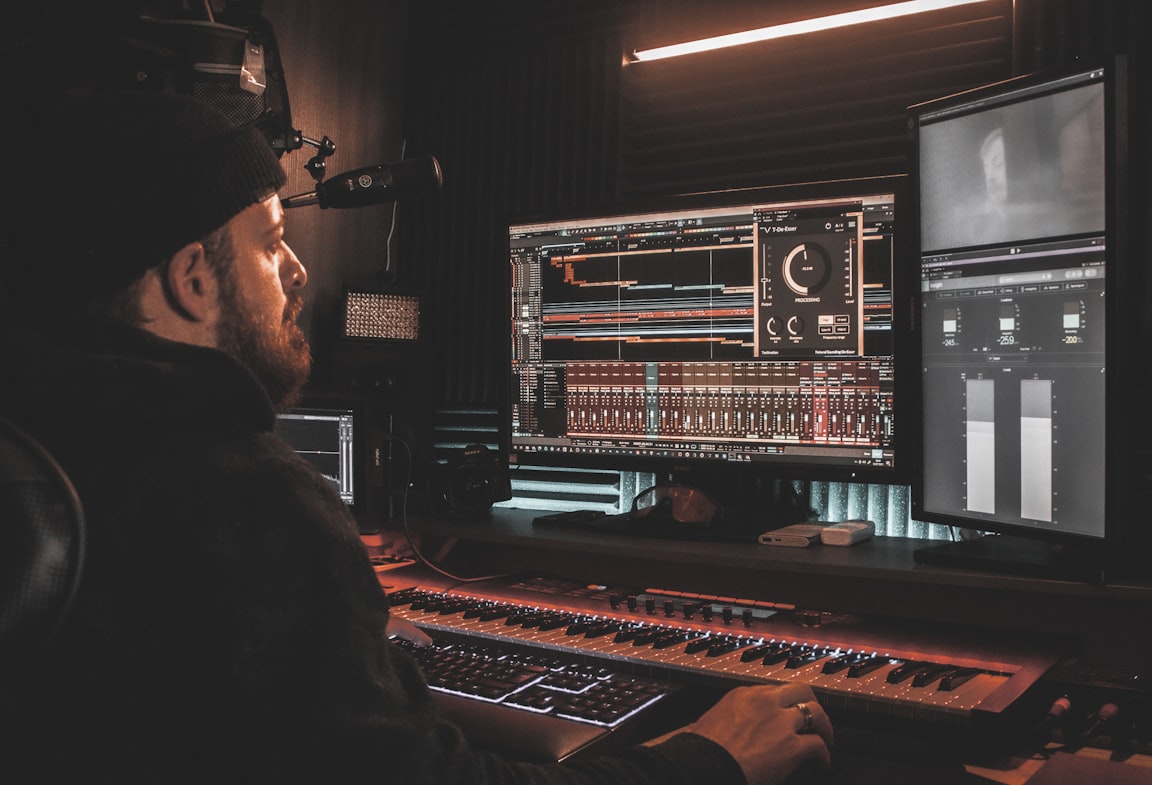1. Choose a dedicated space for your studio: Select a room with minimal external noise and sufficient space for your equipment and furniture.
2. Assess your budget: Determine how much money you can afford to spend on equipment and upgrades.
3. Purchase essential equipment: Start with a computer or laptop, audio interface, microphone, studio monitors, and headphones. Consider purchasing used equipment to save money.
Now, let's continue to set up the equipment.
The Core Setup
When setting up a home studio, paying attention to every small detail in connecting and arranging your hardware can greatly simplify the process and allow you to focus on what's most important - creating music. A well-organized and easy-to-use setup space can greatly enhance the overall experience and enjoyment of working in the studio. By having quick and comfortable access to all your equipment, you can immerse yourself in the creative process and produce your best work.
Remember, the most important thing is to create an arrangement that works for you. Also, understand that the best arrangement of music equipment in a home studio will depend on the specific equipment you have, the size of your studio, and again, your personal preferences. But in general, let's cover some basic guidelines:
Place your computer and audio interface in a central location. Having your computer and audio interface within reach can save you time and reduce the risk of having to unplug and move equipment when you need to access it. Also make sure that your monitor screen is not facing the window or you will find yourself having to constantly shift the brightness depending on the daylight.
Along with the main system i.e. your computer, place your microphone, studio monitors, and headphones within easy reach of your computer and audio interface. This makes it convenient to switch between recording and mixing, and eliminates the need to move around the room to access different pieces of equipment.
Studio monitors if any, should be positioned at an equal distance from your listening position and angled towards your ears. This will provide a balanced stereo image and ensure that you can hear the sound accurately. To start with, try affordable Mackie CR-X Multimedia Monitors.
Other details to pay attention to, like proper lighting, a supportive chair, and a desk at an appropriate height shouldn't be avoided, as these things can help you reduce fatigue and increase your productivity. Cable management is another thing that you have to be aware of. Make sure you use cable ties, Velcro strips, or cable trays to keep cables organized and reduce clutter. A clean and organized workspace can help reduce distractions and improve focus. Make sure you maintain everything regularly.
Keep your floor clean i.e. use shelves or racks to organize equipment. Store equipment such as synthesizers, drum machines, and MIDI controllers on shelves or racks to keep them organized and easily accessible. This can help you quickly find the equipment you need and reduces the risk of damaging equipment by accidentally bumping into it.
Last but not the least, remember to save some space for future upgrades. Maybe there is a potential for future upgrades and expansions when arranging your equipment, so keep it at the back of your mind. This allows you to easily add new equipment to your studio as your needs grow, without having to rearrange everything. Try not to collect things you don't need. If you need it for short period of time, try renting or borrowing it.
(Photo by @techivation)
